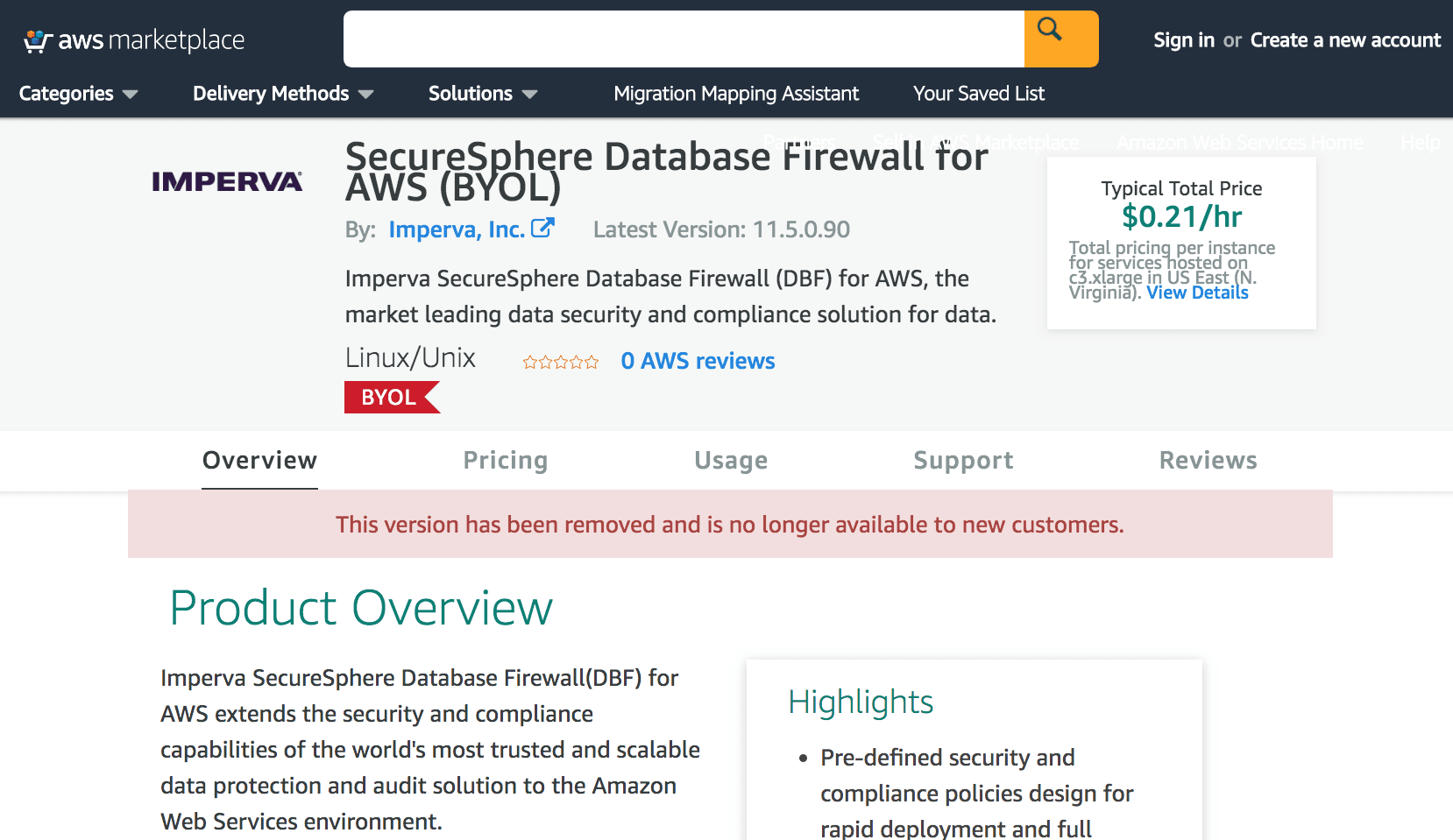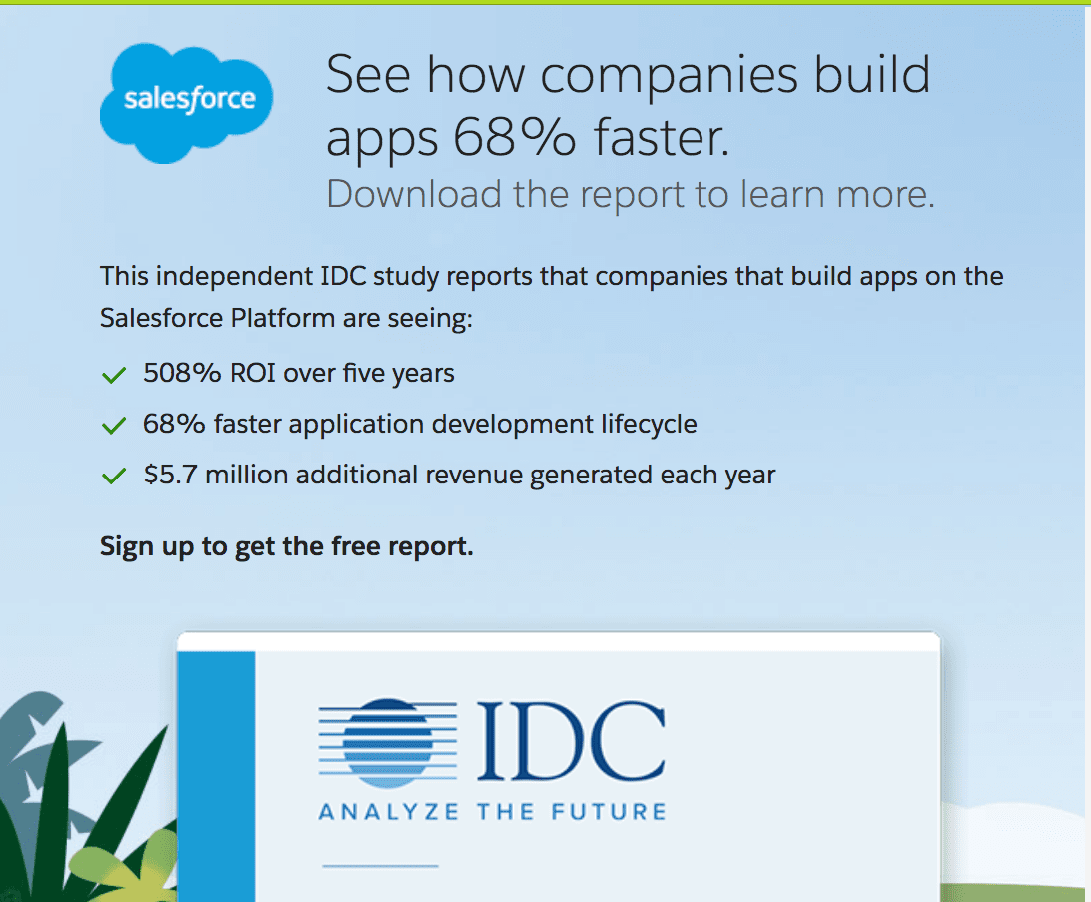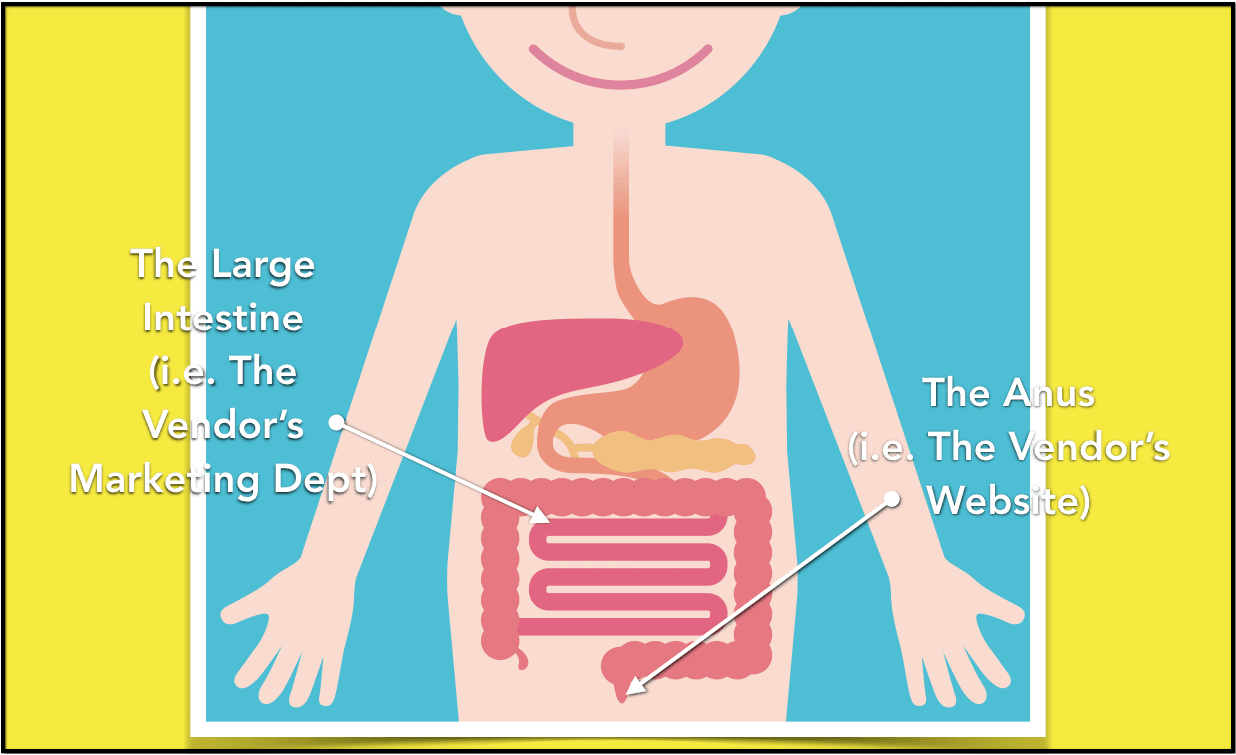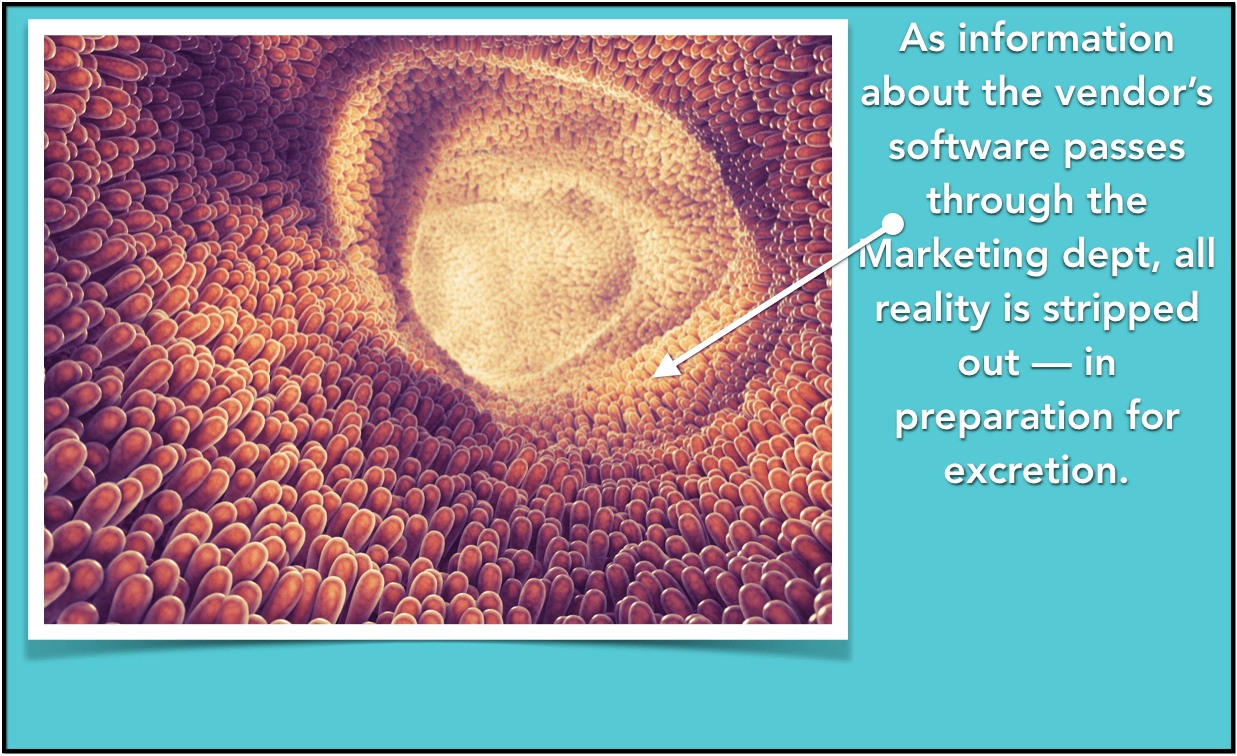Is The Most Accurate Analogy of Software Vendor Marketing Content
Executive Summary
- Their marketing departments control the websites of software vendors and consulting firms.
- We cover how the best way to think of his content.

Introduction
Often, software vendors’ websites are thought of as a place where potential and current customers and other interested parties can learn about the software. This is not an accurate explanation of the nature of the content that resides on vendors’ websites. For this article, we thought long and hard about the best and most accurate metaphor for what you will find on software vendors’ websites and the websites of consulting companies that implement each vendors’ software. This article will cover the connection between marketing and the human digestive system.
Our References for This Article
If you want to see our references for this article and related Brightwork articles, see this link.
How Did This Metaphor Finally Occur to Us?
By reading the websites of software vendors and consulting companies and the websites of media entities that software vendors and consulting companies pay to repeat their marketing information, we finally concluded the appropriateness of this metaphor.
The Quality of Information on the ROI of CRM Systems
In reviewing the top-rated articles according to Google on the ROI of CRM systems (which you can read in the article Our Evaluation of the Information Quality Level on CRM ROI from Google Search Results), we scored each accuracy and overall quality article. The average score of the 17 articles reviewed was 2.3.
These articles had the following characteristics.
- There were many false claims made in most of the articles.
- The articles were highly biased as most were written by those selling CRM software or consulting.
- Almost all the articles were written so that the author could put out a minimal level of effort.
- Few of the articles addressed the reality of the difficulty of an accurate CRM ROI calculation.
- Nearly all the articles appeared to presume that a CRM system’s ROI estimation would be positive and relied on industry-funded studies by companies not following research rules. However, none of the sources referenced are reliable.
This experience has been replicated in all the areas where we performed a similar analysis. The outcome does not change much whether the topic is ERP systems or artificial intelligence. This is not to say there is no accurate information on the websites of software vendors. You do find explanations of how products work on vendor websites.

This type of vendor web page that only lists the basics or specifications of the software is normally right. However, this is because marketing has less to add to these pages.

However, as soon as you move to where the vendor asserts how their products work, this immediately becomes false.
Let us review what Salesforce does not tell you in this article.
- Salesforce paid for this report by IDC.
- IDC is a completely corrupt IT analyst firm that can be paid to write just about any vendor.
- All of the numbers presented in this synopsis are based upon cherry-picked case studies provided by Salesforce to IDC.
This video on AI by Capgemini is filled with false information about artificial intelligence, which is all designed to sell Capgemini AI consulting services. Marketing at Capgemini could not care less whether anything they publish is real.
IBM’s Watson bombed so hard in health care that we needed to develop a new name for it. We covered Watson’s failure in the article How IBM is Distracting from the Watson Failure to Sell More AI. Even though Watson failed, this does not mean that IBM has any reason to change its story on Watson.
Some readers that work in vendors and consulting firms (particularly those that work in sales and marketing) will find this article offensive. However, what is more offensive than deliberately false information designed to deceive one’s prospects and current customers?
The logic normally applied is that while it is not rude to lie and dishonest, it is rude to point out these lies. All of the people who work in sales and marketing for Capgemini, IBM, Salesforce, etc., consider themselves good people and should not be shunned by society.
Reviewing the Human Digestive System
To understand the metaphor and why it is so accurate, we need to spend just a moment reviewing how the human digestive system works.
The colon is the last part of the digestive system. It has a segmented appearance due to a series of saccules called Haustra. It extracts water and salt from solid wastes before they are eliminated from the body and is the site in which flora-aided (largely bacterial) fermentation of unabsorbed material occurs. Unlike the small intestine, the colon does not play a major role in absorption of foods and nutrients. – Wikipedia
A Visual Aid
Let us see a visual and tie together the digestive system and software vendors’ and consulting companies’ content.
 The output of marketing matriculates through the digestive system (i.e., the marketing department) and exits through an opening in the software vendor, called the vendor’s website; the most accurate analogy is the anus of a human.
The output of marketing matriculates through the digestive system (i.e., the marketing department) and exits through an opening in the software vendor, called the vendor’s website; the most accurate analogy is the anus of a human.
How Google Help Disseminate False And Commerical Information to Readers Looking for Objective Information
Therefore, when Google provides you with results on an IT topic, it directs you to multiple vendor anuses. Once you click the link, your eyeballs will be blasted with the marketing department’s excrement.
As we cover in the article Why is There No Manual Adjustment or Non-Commerical Preference in Google’s Search? Google does not provide a way for those that use its search engine to de-emphasize commercial results (that is, the anuses of software vendors and consulting companies). Remember, Google only cares about advertising profit-maximizing and does not consider that it fulfills any public service function. The more anuses Google shows its users, the more money it makes.
Getting into the Gory Details: How Marketing Works as an Intestine
In the human digestive system, food taken in through the mouth is broken down in the stomach and then transferred to the small intestine, where most of the nutrients are extracted. As it traverses down the digestive system, it becomes feces or excrement.
This same process happens in software vendors and consulting firms’ marketing departments; however, instead of extracting the nutrients, marketing extracts reality, but the output is the same: fecal matter or excrement.
A Visual Aid
Let us review a visual to see how this occurs.

Where Do We Fit Into This Digestive Process?
Vendors routinely reach out to BR&A because they
“Would like to get to know us.”
The first step in the process is for the vendor representative to state how much they like an article. This is the buttering up the stage and lasts between 2 and 6 minutes.
After the compliments are given, the next step is where the vendor states that..
“We would like to get XYZ story out.”
This is the intent of reaching out. Vendors have excrement, and they see us as a good exit point for this excrement.
Why?
Because the more anuses one has at one’s disposal, the more excrement can be pushed out. Still, if you can push your excrement out of another website, you can make it look like there is a consensus that your excrement is not excrement. This is why vendors and consulting firms pay so much money to push their marketing excrement through outlets like ComputerWeekly or CIO. Luckily for them, most of these entities are owned by just a few conglomerates like IDG and TechTarget, which simplifies the process. Neither IDG nor TechTarget ever tells their readers that they are just reading second-hand excrement originated at a vendor or consulting firm.
Software vendors talk about how Gartner and Forrester are sold out (privately, of course), but curiously, every vendor we contact appears to want to convert BR&A into a marketing front end for their software. Software vendors and consulting companies are always looking for objective information sources that they can corrupt.
Conclusion
This is a powerful metaphor and good preparation for anyone who intends to read software vendors or consulting firms implementing software. The fundamental rule of marketing software and software consulting services is always to cherry-pick information and always exaggerate the software’s benefits. This, combined with the zero percent interest in communicating truthful information by marketing departments, results in the production of large quantities of excrement every year that ends up indexed by Google, which has no commercial filter and no way of separating accurate articles from those containing exaggerations or outright falsehoods.